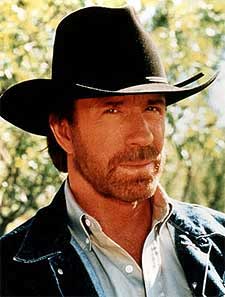12 Little-Known Facts About the Declaration of Independence (Part 3)
By Chuck Norris

Dallas, TX – -(Ammoland.com)- Over the past two weeks, I’ve highlighted eight little-known facts about the Declaration of Independence.
(If you missed the first two parts of this series, you can find them at https://www.ammoland.com/tags/chuck-norris/.)
Here are the last four facts in my series:
9) One of the 26 known July 1776 copies of the Declaration of Independence was found behind an old painting purchased at a flea market for $4.
In 1991, one of 24 known copies at the time of the declaration — and one of only three known to be privately owned — was auctioned for $2.42 million.
What’s even more staggering is where it was originally found.
According to The New York Times, “the previous owner, who was not identified, had told Sotheby’s (art auctioneers) he bought a torn painting for $4 in a flea market in Adamstown, Pa., because he was interested in its frame. When he got home, he said, he removed the painting — a dismal country scene — and concluded the frame could not be salvaged, but found the Declaration, folded and hidden in the backing.”
The 25th and 26th copies later surfaced. The 25th was sold in excellent condition in 2000 for $8.1 million. The 26th emerged at The National Archives in Britain in 2009. It had been hidden for more than 200 years in a box of papers seized during the Revolutionary War from Colonists.
10) The Declaration of Independence was placed in Fort Knox during World War II.
Two weeks after the Japanese attacked Pearl Harbor in 1941, two national treasures — the Declaration of Independence and the U.S. Constitution — were transported under armored protection from Washington to Fort Knox. According to History’s website, “under the supervision of armed guards, the founding document was packed in a specially designed container, latched with padlocks, sealed with lead and placed in a larger box. All told, 150 pounds of protective gear surrounded the parchment. On December 26 and 27, accompanied by Secret Service agents, it traveled by train to Louisville, Kentucky, where a cavalry troop of the 13th Armored Division escorted it to Fort Knox. The Declaration was returned to Washington, D.C., in 1944.”
As far as the declaration’s placement in the National Archives Building goes, on Dec. 13, 1952, it — along with the Constitution and Bill of Rights — was officially delivered to the archivist of the United States, Wayne Grover, and enshrined at the National Archives in a ceremony two days later, which was attended by President Harry S. Truman.
11) There is something written on the back of the Declaration of Independence.
According to the National Archives and Records Administration’s website, “there is writing on the back of the original, signed Declaration of Independence. But it is not invisible, nor does it include a map, as the Disney feature (film ‘National Treasure’) suggests. The writing on the back reads ‘Original Declaration of Independence, dated 4th July 1776,’ and it appears on the bottom of the document, upside down.” It’s speculated that the words were written on there as a label, being that it was rolled up and carried during the Revolutionary War. But no one knows for sure why or when it was written or by whom it was written.
12) There are five references to God in the Declaration of Independence.
In his article titled “Five References to God in the Declaration of Independence,” Dr. Harold Pease, political science instructor at Taft College, wrote: “It always amazes me when otherwise intelligent people are unable to find evidence of God in our governing documents. The Declaration of Independence, the signing of which we commemorate July 4th, alone has five references to God — two in the first paragraph, one in the middle, and two in the last.”
As historian David Barton explained, we often are taught that the primary reason the Colonists revolted from British rule was taxes, but taxation is the 17th among 27 reasons given in the Declaration of Independence for the Colonies seceding from Great Britain.
For the 56 signers, it was their trust in God and commitment to one another — not “no taxes” — that served as the pillar of their rebellion and our republic. They wrote, “For the support of this Declaration, with a firm Reliance on the Protection of divine Providence, we mutually pledge to each other our Lives, our Fortunes, and our sacred Honor.”
And I believe we ought to do likewise, as well as teach our posterity to do the same.
I wrote my New York Times best-seller “Black Belt Patriotism” to help educate and equip Americans who are not very familiar with our Founding Fathers’ America. It not only gives a copy of the Declaration of Independence and U.S. Constitution in the back of it but also details how our country would be better off in a host of ways if we turned back the clock to how our founders ran it.
Follow Chuck Norris through his official social media sites, on Twitter @chucknorris and Facebook’s “Official Chuck Norris Page.” He blogs at http://chucknorrisnews.blogspot.com.
About:
Action hero and Second Amendment activist, Chuck Norris is one of the most enduringly popular actors in the world. He has starred in more than 20 major motion pictures. His television series “Walker, Texas Ranger,” which completed its run in April 2001 after eight full seasons, is the most successful Saturday night series on CBS since “Gunsmoke.”In 2006, he added the title of columnist to his illustrious list of credits with the launch of his popular Internet column. Now Chuck is a regular contributor to AmmoLand, click the following link to See more of Chuck Norris on AmmoLand Shooting Sports News.
The post 12 Little-Known Facts About the Declaration of Independence (Part 3) appeared first on AmmoLand.com.
